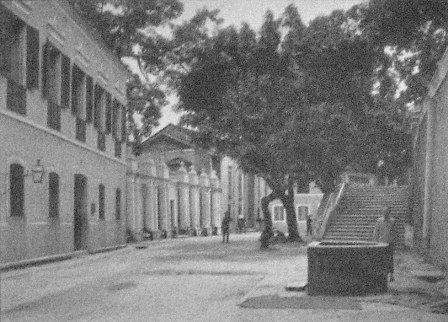St. Lawrence’s Church and Rua de S. Lourenço
The Rua de S. Lourenço is named after the St. Lawrence’s Church, which was constructed on a deltaic slope and surrounded by the three sections of Rua de S. Lourenço. The two sections flanking the main entrance of the Church meet in front of the Instituto Salesiano at Rua do Padre António. The 117 metres long session reaches Rua Central to its left and the 92 metres long session borders Rua de Inácio Baptista to its right. The third session of the street, which is 57 metres in length, runs in between Rua de Inácio Baptista and Rua da Imprensa Nacional.Seated atop the slope of Praia Grande district, the St. Lawrence’s Church was constructed by the Jesuits in the 16th century in dedication to St. Lawrence, who was a deacon of the Roman Catholic Church. Allegedly, the St. Lawrence’s Church was erected with a flagpole to fly flags that provide information about the wind. This installation could be associated to the origin of the Church’s name in Chinese, which is “Church of Smooth Wind”, implying an invocation for “timely wind and rain”. In the old days, the Catholic family of those Portuguese who sailed away to the high seas would pray to God to give their loved ones a safe homebound journey. The Church was actually a primitive wooden house in the beginning before it was reconstructed into a Baroque-style structure in 1618 with a symmetrical façade and classically elegant interior ornamentation of Oriental artistic taste.











